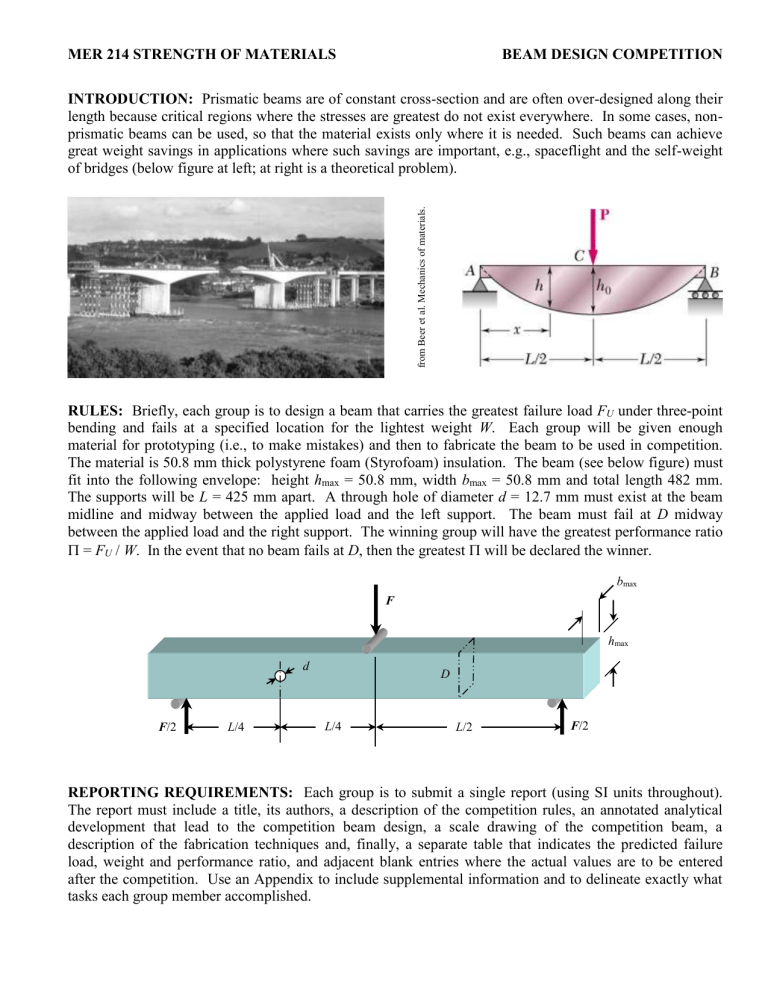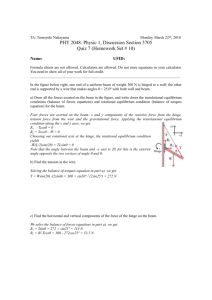A primary focus of Strength of Materials are materials classified as

MER 214 STRENGTH OF MATERIALS BEAM DESIGN COMPETITION
INTRODUCTION: Prismatic beams are of constant cross-section and are often over-designed along their length because critical regions where the stresses are greatest do not exist everywhere. In some cases, nonprismatic beams can be used, so that the material exists only where it is needed. Such beams can achieve great weight savings in applications where such savings are important, e.g., spaceflight and the self-weight of bridges (below figure at left; at right is a theoretical problem).
RULES: Briefly, each group is to design a beam that carries the greatest failure load F
U
under three-point bending and fails at a specified location for the lightest weight W . Each group will be given enough material for prototyping (i.e., to make mistakes) and then to fabricate the beam to be used in competition.
The material is 50.8 mm thick polystyrene foam (Styrofoam) insulation. The beam (see below figure) must fit into the following envelope: height h max
= 50.8 mm, width b max
= 50.8 mm and total length 482 mm.
The supports will be L = 425 mm apart. A through hole of diameter d = 12.7 mm must exist at the beam midline and midway between the applied load and the left support. The beam must fail at D midway between the applied load and the right support. The winning group will have the greatest performance ratio
= F
U
/ W . In the event that no beam fails at D , then the greatest
will be declared the winner. b max
F d
D h max
F /2 L /4 L /4 L /2 F /2
REPORTING REQUIREMENTS: Each group is to submit a single report (using SI units throughout).
The report must include a title, its authors, a description of the competition rules, an annotated analytical development that lead to the competition beam design, a scale drawing of the competition beam, a description of the fabrication techniques and, finally, a separate table that indicates the predicted failure load, weight and performance ratio, and adjacent blank entries where the actual values are to be entered after the competition. Use an Appendix to include supplemental information and to delineate exactly what tasks each group member accomplished.











